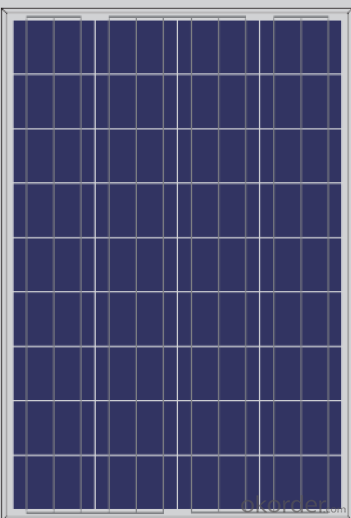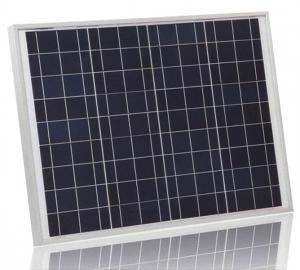Military Grade Polycrystalline Solar Panels 156 Series 110W
- Loading Port:
- Shanghai
- Payment Terms:
- TT OR LC
- Min Order Qty:
- 1 watt
- Supply Capability:
- 1000000 watt/month
OKorder Service Pledge
OKorder Financial Service
You Might Also Like
Description:
CNBM Solar is a world-leading and Vertical integrated manufacturer of high-performance with Silicon,
Wafer, Cells, Modules, which convert sunlight into electricity for residential, commercial, and utility-scale
power generation.
The capacity of CNBMSolar is reach to 1GW, and make sure each year our shipment capacity is more
Than 700-800MWs, at the same time, we have set up the largest solar power station with our partner
in Ukraine.
CNBM is a Quality + Service oriented company with“Excellence at Each Step” approach, composed of
the finest components from TUV and IEC-certified partners around the world, CNBM modules consistently
undergo a variety of trials at the company’s Test & Development Centre, ensuring peak performance
capabilities. The company is committed to develop and provide the world with clean and renewable energy
to ease the energy shortages as well as human kind’s impact on the environment.
Data:



FAQ:What's the products warranty ?
No less than 90% within 10yrs and no less
than 80% within 25yrs
- Q: I would like to know of any construction companies, road crews, or any company that uses solar panels in the Tampa area and throws them away. I like to recycle solar panels by repairing and processing what power I can from them. Know any companies that throw out used solar panels? If so, can you provide the name and number?
- Used solar panels are usually a great bargain. Unless there is obvious major damage, you are most likely making a very safe and thrifty purchase--and if you can test the panels with a multimeter in full sunlight before purchase, you are almost guaranteed a functional panel. Nobody really knows what the lifespan of a solar panel is, since many of the very first panels are still in operation. I have three very old Arcos on my house, and they are still performing well. However, used panel prices have
- Q: Can someone explain to me how solar panels can be used as modern architectural attributes? please help
- You could check out building integrated photovoltaics (BIPV). BIPV includes things like solar roof tiles and smart energy glass that acts as a window and also creates electricity. BIPV is a great way for people to go solar without disrupting the modern architectural attributes of an existing structure.
- Q: Can solar panels be installed on factories or manufacturing facilities?
- Yes, solar panels can definitely be installed on factories or manufacturing facilities. In fact, these large industrial buildings often have expansive roof spaces that are ideal for installing solar panels. By harnessing solar energy, factories and manufacturing facilities can significantly reduce their reliance on traditional energy sources, lower their carbon footprint, and potentially save on electricity costs in the long run.
- Q: Which kit did you use?How easy was it to build? How much did it cost to build the panels?How many kw or watts does it produce?Any other info on the kit or panels you built would be helpful.Thanks!
- the kit is a fraud and should be ignored. You cannot make a solar panel at home to the quality and output that professional ones are. It's like thinking you can buy chips and make your own PC.
- Q: Polycrystalline solar panels are good or single crystal solar energy is good
- Polycrystalline silicon solar cell production process and monocrystalline silicon solar cell almost, but the polysilicon solar cell photoelectric conversion efficiency will have to reduce a lot of its photoelectric conversion efficiency of about 12% (
- Q: How do solar panels affect the insurance premiums of a home?
- Solar panels can potentially have a positive impact on home insurance premiums. While the initial installation cost of solar panels may increase the value of a home, they can also lower the risk of fire damage and reduce reliance on the grid. As a result, some insurance companies offer discounts or special policies for homes with solar panels, which may lead to lower insurance premiums in the long run. However, it is important to consult with individual insurance providers as policies can vary.
- Q: How do solar panels connect to the electrical grid?
- Solar panels connect to the electrical grid through an inverter, which converts the direct current (DC) generated by the panels into alternating current (AC) that is compatible with the grid. This AC power is then fed into the main electrical panel of the building and can be used to power appliances and devices. If the solar panels generate excess electricity, it can be sent back to the grid, and if there is a shortfall, electricity can be drawn from the grid to meet the demand.
- Q: What are the supplies needed in a solar panel field, i know there are the panels. But what about batteries, and converters. Possibly other things, and how many will i need, for a certain amount of panels?
- There okorder . I think you can find lots of info on the internet. I hope this helps you get going.
- Q: Can solar panels be used to power a sports stadium?
- Yes, solar panels can be used to power a sports stadium. By installing a sufficient number of solar panels on the stadium's roof or surrounding areas, the captured solar energy can be converted into electricity to power various systems within the stadium, including lighting, heating, ventilation, and other electrical equipment. This can reduce the reliance on traditional energy sources and provide a more sustainable and environmentally friendly solution for powering sports stadiums.
- Q: i need someone to advice me which solar panels to buy.i have looked into few companies and i need some more info before decidingthe companies i checked were Sun tech trina solar Canadian solar and LDK solar.whice company should i pick?? please help.
- Selecting the right solar panels is like shopping for a car. Shop around and compare prices. Make sure the frame material will not rust or corrode away after a few years if you are near the ocean. Talk to satisfied customers is always wise. Get the guarantee in writing.
Send your message to us
Military Grade Polycrystalline Solar Panels 156 Series 110W
- Loading Port:
- Shanghai
- Payment Terms:
- TT OR LC
- Min Order Qty:
- 1 watt
- Supply Capability:
- 1000000 watt/month
OKorder Service Pledge
OKorder Financial Service
Similar products
Hot products
Hot Searches
Related keywords


























